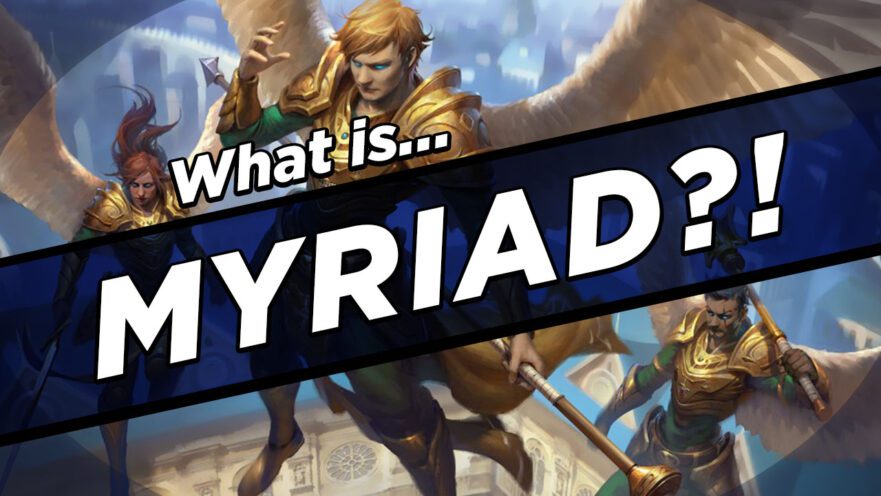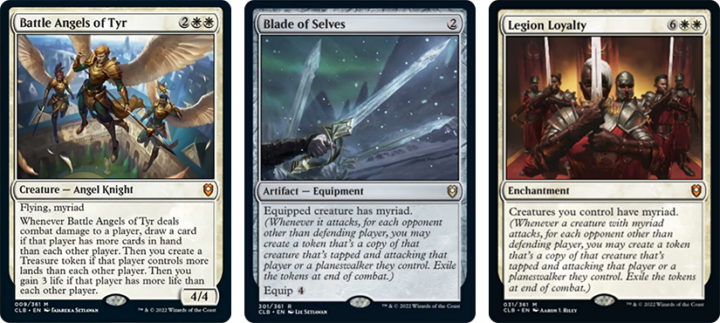Myriad is a creature-based multiplayer mechainc. I mean, you could play it in a 1-vs-1 game, but it wouldn’t do a whole lot of anything. Here’s why:
When a creature with Myriad attacks, for each opponent other than the one you attacked, you create a token copy of the myriad creature that enters the battlefield tapped and attacking those opponents. At the end of combat, you exile the tokens. So you need more than one opponent for myriad to do its thing. Some notes:
- As the tokens enter the battlefield, you can choose whether they are attacking the player or a planeswalker that player controls. If the player doesn’t have a planeswalker, the token is just attacking the player.
- If you have a Doubling Season-type effect on the board you make the previous choice for each one of those tokens – so you could have one token attack a player, and the other token created for that player attack a planeswalker they control.
- The tokens enter the battlefield attacking, which means they are never technically declared attackers. A small note, but one that matters for some effects – like myriad itself. This means myriad doesn’t just trigger itself endlessly.
- That previous note also means that if there are any Ghostly Prison-style effects on the battlefield, the tokens get around it – you don’t have to pay costs you normally might to attack with the tokens.
- Multiple instances of myriad all trigger separately.
Myriad is pretty strictly a multiplayer mechanic, as having myriad usually increases the mana value of a card, making it a little overcosted for 1-vs-1 play. It can be pretty potent in Commander and Two-Headed Giant, but don’t ever expect to see it show up in anything other than a supplemental set or a Commander-centric product.
A product like Commander Legends: Battle for Baldur’s Gate, which you can pick up now at cardkingdom.com!


